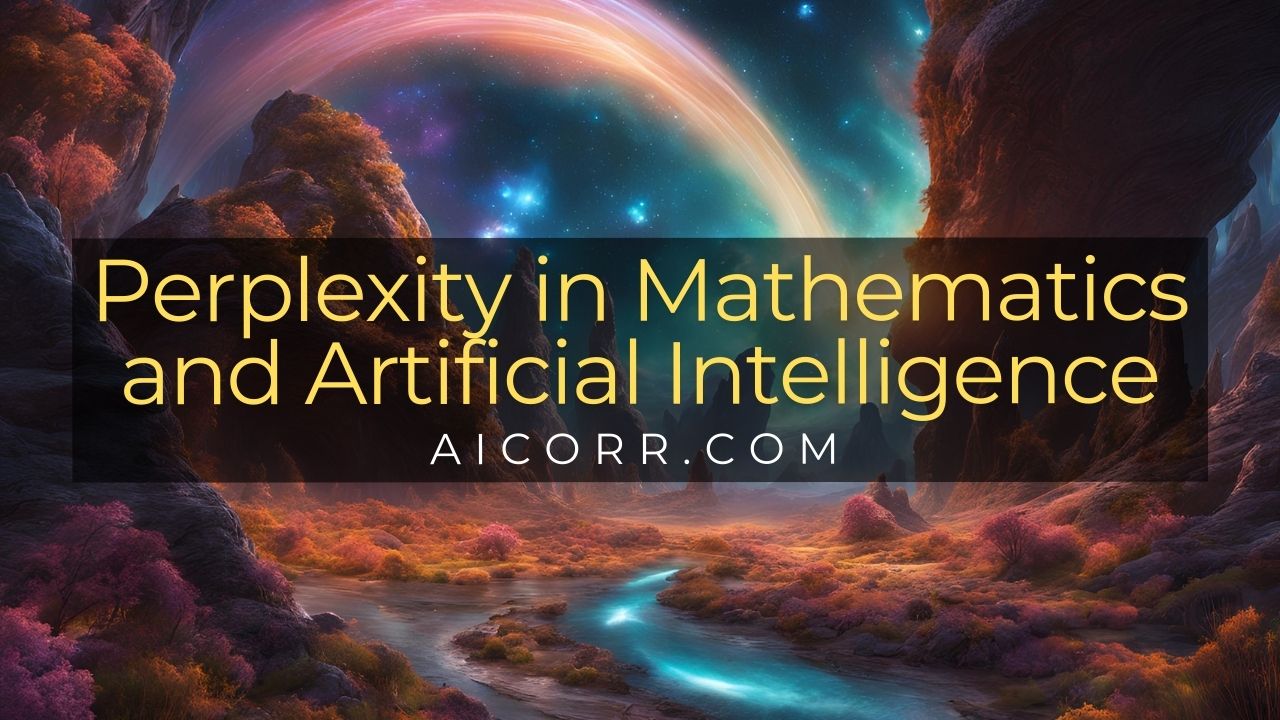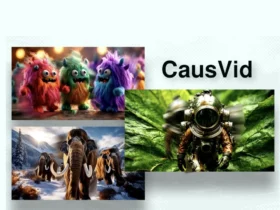Aicorr.com explores the concept of perplexity, providing you with an understanding of its applications in the fields of mathematics and artificial intelligence.
Table of Contents:
Perplexity Overview
Perplexity is a concept with nuanced applications in different fields, including mathematics and artificial intelligence (AI). While the term carries distinct meanings in these contexts, both interpretations share a foundational theme of quantifying uncertainty or complexity. This article explores perplexity in mathematics and artificial intelligence, unpacking its significance, calculations, and implications.
Perplexity in Mathematics
Perplexity finds in fields like probability theory and information theory. It is used as a measure of uncertainty or entropy within a probabilistic system. It offers a way to understand how “confused” or “unsure” a model or observer might be when predicting outcomes or interpreting data.
At its core, perplexity is connected to the concept of entropy. Which measures the average level of uncertainty inherent in a set of probabilities. Shannon entropy, introduced by Claude Shannon in his foundational work on information theory, serves as the mathematical basis for perplexity. The formula for entropy H(P) for a probability distribution P over possible outcomes is given by:

Perplexity derives from entropy and represents the effective number of choices or outcomes a probabilistic model might face. It is defined as:

Simply, perplexity is the exponential of the entropy. Example, if the entropy of a system is 3 bits, the perplexity would be 2^3 = 8. This implies that, on average, the system behaves as though it has eight equally likely choices, even if the actual probabilities are unevenly distributed.
Perplexity’s utility lies in its interpretability. It provides a human-friendly way to express entropy as a tangible number of options. In fields like linguistics, where mathematical models of probability analyse the structure of language, perplexity can help quantify how uncertain a system is about predicting the next word or character in a sequence. Similarly, in games of chance or dice rolling, perplexity might describe how predictable or unpredictable a particular system or game is.
Perplexity also emerges in its ability to compare different probability distributions. A lower perplexity indicates the distribution is more predictable, while a higher perplexity suggests greater randomness. For instance, a perfectly uniform distribution over n outcomes will have a perplexity of n, reflecting the maximum uncertainty.
Perplexity in Artificial Intelligence
In artificial intelligence, particularly in the domain of natural language processing (NLP), perplexity takes on a critical and practical role. Here, it is used as a metric to evaluate the performance of language models. Language models are statistical tools designed to predict the likelihood of sequences of words. As a result, enabling tasks like text generation, machine translation, and speech recognition. Perplexity provides a quantifiable measure of how well a language model performs at predicting text.
Perplexity in AI is closely tied to the mathematical definition of perplexity from information theory. It is defined as the inverse probability of the test set, normalised by the number of words in the sequence. Mathematically, if a language model assigns a probability P(w1,w2,…,wN) to a sequence of words w1,w2,…,wN, the perplexity is given by:

Alternatively, using the cross-entropy formulation, perplexity can also be expressed as:

where H(P) is the cross-entropy of the language model. The essence of this definition is that perplexity evaluates how surprised the model is by the test data. A lower perplexity score indicates that the model assigns higher probabilities to the observed sequences of words. Meaning, it is better at predicting or understanding the structure of the language. Conversely, a high perplexity score suggests that the model struggles to predict the data and assigns lower probabilities to the sequences it encounters.
Interpreting Perplexity in AI
In the context of NLP, perplexity is often used to benchmark and compare different language models. For instance, when evaluating a traditional n-gram model versus a modern transformer-based model, perplexity can serve as a key indicator of relative performance. A model with lower perplexity is typically considered superior. Because it indicates better predictive accuracy and a more comprehensive understanding of the language.
To illustrate, consider a unigram model (which predicts words based solely on their individual probabilities) versus a bigram model (which considers the probability of a word given the previous word). The bigram model generally achieves lower perplexity because it incorporates more contextual information, leading to more accurate predictions. Similarly, advanced neural network models like GPT (Generative Pre-trained Transformer) achieve even lower perplexity scores due to their ability to model long-range dependencies and complex linguistic patterns.
Limitations of Perplexity in AI
While perplexity is a useful metric, it has its limitations. For one, perplexity is heavily influenced by the size of the vocabulary in the language model. Models with larger vocabularies tend to assign smaller probabilities to individual words. As a result, leading to higher perplexity scores even if the model performs well in practice. This can make perplexity comparisons across models with different vocabularies somewhat unreliable.
Another limitation is that perplexity does not directly capture semantic understanding or the quality of generated text. A model may achieve low perplexity by learning statistical patterns in the data without truly understanding the meaning of the text. For example, a model trained on repetitive phrases may perform well in perplexity terms. But, fail to generate coherent or meaningful text in real-world applications.
Despite these challenges, perplexity remains a widely used metric due to its simplicity and alignment with probabilistic principles. Researchers and practitioners often complement perplexity with other evaluation metrics, such as BLEU scores, human evaluations, or perplexity-based fine-tuning, to obtain a more holistic view of model performance.
Comparing Perplexity in Mathematics and AI
Though perplexity originates from mathematical principles, its application in artificial intelligence demonstrates how theoretical concepts can adapt for practical use. In mathematics, perplexity primarily serves as a measure of uncertainty, providing insights into probability distributions and systems. In artificial intelligence, it becomes a performance metric, helping to evaluate and improve predictive models.
One key similarity between the two contexts is their reliance on entropy as a foundational concept. Whether in mathematics or AI, perplexity captures the essence of uncertainty, translating complex probabilistic information into an interpretable numerical value. However, the contexts differ in their emphasis: while mathematics often focuses on abstract systems or theoretical distributions, AI applies perplexity to real-world tasks like language modeling and decision-making.
The Bottom Line
Perplexity is a versatile concept that bridges the gap between abstract mathematics and practical applications in artificial intelligence. In mathematics, it serves as a measure of uncertainty and complexity in probabilistic systems, offering insights into the behavior of distributions. In artificial intelligence, perplexity becomes a critical evaluation metric for language models, guiding the development of tools capable of understanding and generating human language.
Despite its limitations, perplexity remains an invaluable tool for researchers and practitioners alike. Its ability to quantify uncertainty and performance in diverse contexts highlights the power of mathematical principles to inform and advance technological innovation. As AI continues to evolve, perplexity will undoubtedly remain a cornerstone of evaluation and understanding, reflecting the intricate interplay between theory and practice.












